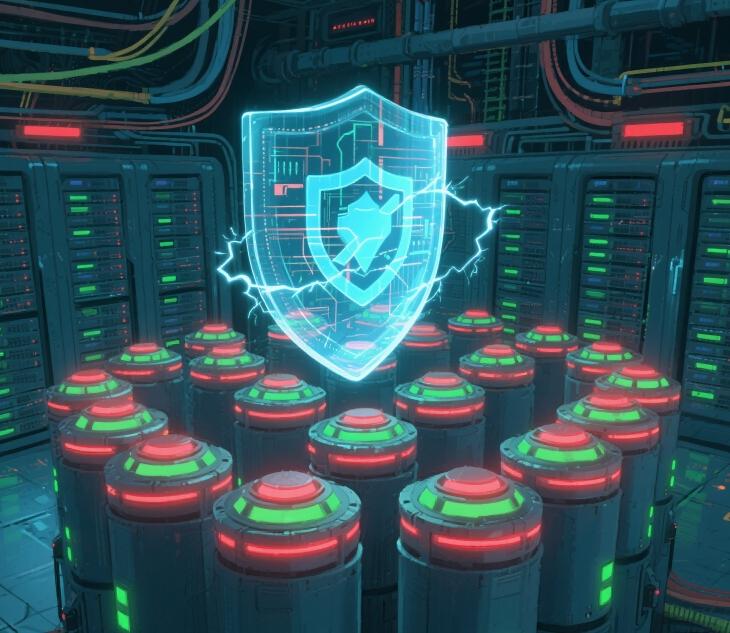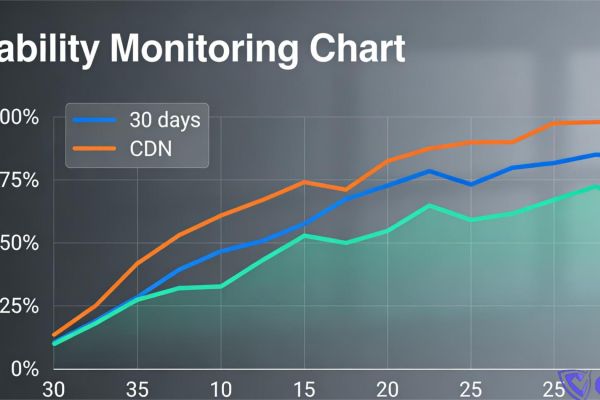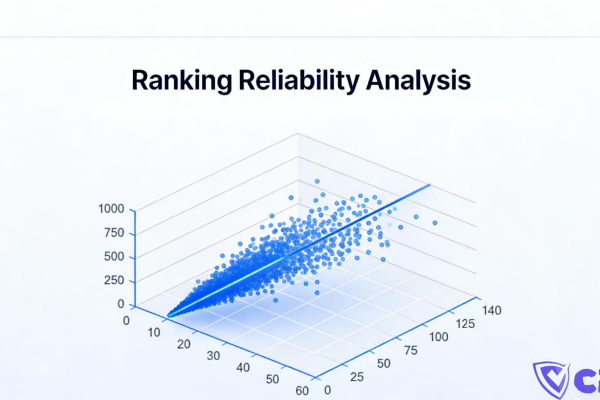What Is a High-Protection CDN? How Much Does It Typically Cost Per Year?
What exactly does a high-protection CDN do? Is it something only big companies need? How much does it really cost per year — is it super expensive? This article breaks down high-protection CDNs in simple terms, helping you understand their purpose, which types of websites they’re suitable for, how to choose a reliable provider, and what price ranges to expect. It’ll help you avoid wasting money an

Why is your website getting slower and slower? Many people who launch websites, games, or apps often run into a frustrating problem:
- The site frequently gets flooded with fake traffic, making it extremely slow;
- Game servers get attacked as soon as they go live, causing players to disconnect;
- Right after placing ads, the site crashes;
- Sometimes, as soon as the site is set up, the IP gets targeted and attacked.
That’s when someone tells you: “You need a high-protection CDN.”
So here come the questions: What exactly is a high-protection CDN? Why do people say it makes things more stable? And how much does it cost per year?
Let’s break it all down from the very beginning.
1. What is a CDN anyway? Let’s start with what it actually does
CDN stands for Content Delivery Network.
In plain English:
It’s basically a network “accelerator” that copies your website content to many servers across the country—or even worldwide—so when someone visits your site, the data comes from the nearest server instead of your original one.
Here’s a simple example ?
Your website server is in Beijing. A user from Guangdong visiting your site has to go halfway across China—so of course it's slow.
But with a CDN, the Guangdong user fetches the content directly from a CDN node in Guangzhou. It’s much faster—like turbo mode.
2. So what is a “High-Protection” CDN?
A regular CDN is for speeding things up. So what does "high protection" mean?
That brings us to the biggest threat to websites: cyber attacks, especially DDoS attacks and CC attacks.
- What is a DDoS attack?: In simple terms, hackers control thousands or even millions of devices (called “zombies”) to flood your website with requests—sending dozens or even hundreds of gigabytes of traffic at once. Your server crashes instantly, and no one can access your site.
- What is a CC attack?: These simulate normal user behavior but repeatedly hammer your website’s pages, interfaces, and data—eventually overwhelming your server.
So, what does a high-protection CDN actually do?
On top of speeding up access like a regular CDN, it adds a powerful "firewall" layer that automatically blocks malicious traffic and attacks—keeping your website up and running smoothly.
Think of it as:
An accelerator + a moat + a gatekeeper + a smart traffic filter
Once your site comes under attack, the high-protection CDN jumps in first to take the hit for you.
3. Why are so many people using high-protection CDNs?
You’ll notice that when a site just launches, everything is fine. But once it starts doing SEO, running ads, or gaining traffic, attacks start rolling in.
What problems can a high-protection CDN solve?
| Scenario | With High-Protection CDN | Without High-Protection CDN |
|---|---|---|
| DDoS attack on website | CDN auto-cleans the traffic; users don’t notice anything | Website crashes instantly |
| Massive concurrent visits | CDN nodes intelligently distribute the load to prevent crashes | Server overloads and fails |
| API spam or CC attacks | Smart detection of fake access; directly blocked | Database crashes, APIs stop responding |
| Slow overseas access | CDN distributes content globally, access speeds up | Poor user experience and severe lag |

4. How does a high-protection CDN work?
Let’s say you have a website: www.XXX.com, hosted at IP address: 123.123.123.123.
- You connect it to a high-protection CDN, which gives you a “shield IP.”
- When users visit your site, they actually hit the CDN node’s IP.
- The CDN handles acceleration and checks whether it’s malicious traffic.
- Legit requests are forwarded to your real server; attack traffic is discarded.
Your real server IP stays hidden and protected, reducing exposure and risk.
It’s like hiring a gatekeeper who not only stops intruders but also accepts packages for you.
5. What’s the difference between High-Protection CDN and traditional High-Protection IP?
This is one of the most frequently asked questions.
| Item | High-Protection CDN | High-Protection IP |
|---|---|---|
| Website Acceleration | ✅ CDN nodes accelerate access | ❌ No acceleration, only protection |
| Deployment Complexity | Simple, just change DNS records | Medium, may require server-side changes |
| Cost | Relatively low | Relatively high |
| Best Use Cases | Websites, apps, mini-programs | Game ports, API-heavy services |
Simply put: if your site is mainly static content, images, text, and APIs, go for a High-Protection CDN. If you're running a large real-time game or live stream, a High-Protection IP might be better.
6. How much does a high-protection CDN cost per year? Is it expensive?
Let’s get straight to the point:
High-protection CDNs billed by traffic typically cost anywhere from a few thousand to tens of thousands of RMB per year.
But the exact cost depends on your site's traffic, attack frequency, business scale, and bandwidth needs—so pricing can vary a lot.
Here are the 3 most common pricing models:
- By Bandwidth (most common)
- For example, if you use 10Mbps daily, the platform charges based on peak bandwidth.
- Price range: ¥300/month to ¥8000/month
- By Request Count
- For instance, 100 million requests per month—during attacks this can spike.
- Ideal for API-driven businesses and mini-programs.
- Annual Fixed Package
- Some providers offer plans like: 5Gbps protection + 50 global CDN nodes = ¥8000–¥15,000/year
Here are some pricing examples from well-known providers:
| Provider | Max Protection | Node Coverage | Annual Cost (Estimate) | Recommended For |
|---|---|---|---|---|
| Tencent Cloud High-Protection CDN | 10Gbps | Domestic + Overseas | ¥12,000/year and up | Mid-size websites, e-commerce |
| Alibaba Cloud Anti-DDoS CDN | 5Gbps | Mainland China | ¥8000/year and up | SMBs |
| CDN07 High-Protection CDN | 30Gbps+ | 100+ Nodes | ¥5000–¥30,000/year | Site clusters, gaming, social apps |
| Cloudflare Pro | Scalable | Global | ¥2000–¥80,000/year | Overseas sites, international business |
❗Note: Free CDNs (like Cloudflare's free plan) offer limited protection. Once attacks get serious, they often can’t handle the load.
7. Who should use a high-protection CDN? Which industries is it strongly recommended for?
The following types of websites almost always need a high-protection CDN:
- E-commerce websites: face lots of malicious attacks during events like Singles' Day or Black Friday
- Financial platforms: huge user bases, any downtime is critical
- Mini games/browser games: malicious competition is common
- Gray-area websites: like novels, movies, gambling, or proxy services—attacks are routine
- Independent blogs/SEO site clusters: often get traffic-spammed, servers can’t handle it
- International/foreign trade websites: need overseas acceleration, even more need for protection
8. How to deploy a high-protection CDN properly (just 5 steps)
- Choose a service provider
- Recommended in China: Tencent Cloud, Alibaba Cloud, Baidu Cloud, JD Cloud, etc.
- Recommended abroad: Cloudflare, CDN07, Akamai, Fastly, etc.
- Add your domain
- Add your website’s domain in the CDN dashboard
- Configure the origin server IP
- This is your actual hosting server’s address
- Set up DNS
- Point your domain's DNS to the IP provided by the CDN
- Test and launch
- Check if acceleration is working and attacks are being blocked
Most platforms offer a visual dashboard. You can usually get started in under 3 minutes.
9. My personal advice (as a cybersecurity engineer)
After over a decade in cybersecurity, I’ve seen countless websites crash again and again just because they didn’t use a high-protection CDN:
- Spent thousands on advertising—site went down, and not a single sale was made;
- E-commerce campaign just launched—got attacked, backend collapsed;
- Brand new site went live—got instantly knocked out by a competitor.
Here’s what I recommend:
✅ On a tight budget?
Start with an entry-level high-protection CDN. Choose a basic plan + configure rules smartly. Stability comes first.
✅ Don’t fall for shady, unknown providers
A solid high-protection CDN relies on global node coverage, powerful traffic cleaning, and reliable uptime. Cheap services may fail when you need them most.
✅ Hybrid defense is the most reliable setup
High-protection CDN + Web Application Firewall (WAF) + Hidden Origin IP + Log Monitoring = complete protection.
Final thought:
A high-protection CDN isn’t just a “speed booster”—it’s your business’s survival kit.
For entrepreneurs, indie developers, small businesses, and high-risk webmasters, a high-protection CDN is like having a steel gate, a security guard team, and a full camera system at your storefront. It doesn’t help you make money directly—but it keeps your doors open.
Share this post:
Related Posts

Cross-Border Website Security & Speed: How to Choose a Reliable Overseas DDoS-Protected CDN?
Why do cross-border websites crash as soon as they're attacked? Drawing from real webmaster experien...

Can You Trust Those "Top DDoS-Protected CDN" Lists? The Truth Revealed by a Veteran Webmaster
Are "Top DDoS-Protected CDN" lists actually reliable? Drawing from years of hands-on testing, this g...

Are Hong Kong CDN Nodes Really Faster? The Key Differences Between Hong Kong CDN and Mainland China CDN Explained
Are Hong Kong CDN nodes truly faster than mainland nodes? I compared Hong Kong CDN vs. Mainland Chin...
